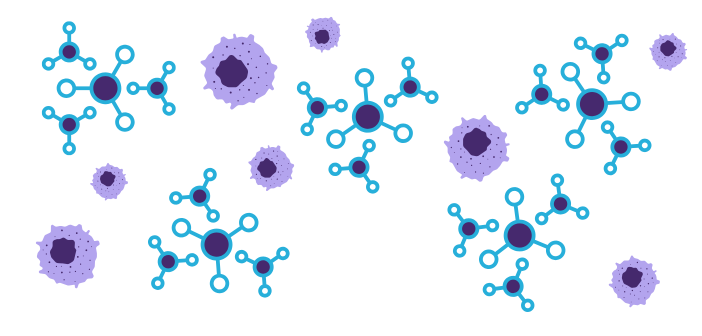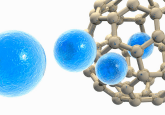Goodbye cells, hello nanoparticles: switching up cancer detection

Ditching genetic engineering for nanoparticles and cyclic peptides, researchers have created novel cell-free biosensors for highly sensitive cancer detection.
Researchers from the Georgia Institute of Technology (GA, USA) have developed innovative biosensors that promise highly accurate diagnostics while reducing costs and complexity. By using computer-like logical reasoning to detect cancer signals and minimize false positives, these new biosensors outmatch their traditional counterparts in simplicity, safety and reliability, with the potential to transform cancer detection and monitoring.
Goodbye cells, hello nanoparticles
Traditional biosensors like those in CAR T-cell therapy, often relying on genetic engineering, are complex and prone to off-target effects. By contrast, the new cell-free sensors comprise iron oxide nanoparticles and cyclic peptides. Not only are these components easier to produce and less costly than genetic engineering, but they are also less likely to trigger immunogenic side effects.
You may also be interested in:
- Small but mighty: using nanotechnology to enhance disease detection
- Bispecific antibodies are ‘switching’ up immunotherapy
- Extracellular Vesicles (EVs) & Lipid Nanoparticles (LNPs) 2025
The team implemented a Boolean “AND-gate” logic system, ensuring the cyclic peptide sensors only release a signal when two distinct cancer-related enzymes – granzyme B and matrix metalloproteinase – are present and active, enhancing specificity. Imagine trying to get a snack from a vending machine. You need to press the button and insert money to get the snack, right? That’s exactly how these ‘logic gates’ work, with two required inputs (the enzymes) and one output (the signal).
“Our peptides allow for greater accuracy in detecting cancer activity,” explained lead author Anirudh Sivakumar, a postdoctoral researcher in Kwong’s Laboratory for Synthetic Immunity at Georgia Tech. “It’s very specific, which is important for knowing when immune cells are targeting and killing tumor cells.”
Let the evidence speak for itself
In animal studies, the biosensors accurately differentiated between tumors responding to immune checkpoint blockade therapy – a common cancer treatment – and tumors that were resistant to the therapy. Moreover, they did not generate false signals from unrelated immune responses, such as flu infections.
“This level of specificity can be game changing,” commented Gabe Kwong, Associate Professor and Robert A. Milton, Endowed Chair in the Wallace H. Coulter Department of Biomedical Engineering at Georgia Tech. “Imagine being able to identify which patients are responding to the therapy early in their treatment. That would save time and improve patient outcomes.”
Looking towards the future
Supported by grants from the Petit Institute for Bioengineering and Bioscience at Georgia Tech, the National Science Foundation (VA, USA) and the NIH (MD, USA), the research highlights the impact of unified, multidisciplinary efforts. Looking ahead, researchers hope these biosensors will facilitate improved, cost-effective cancer diagnostics that could save lives and advance personalized medicine.




